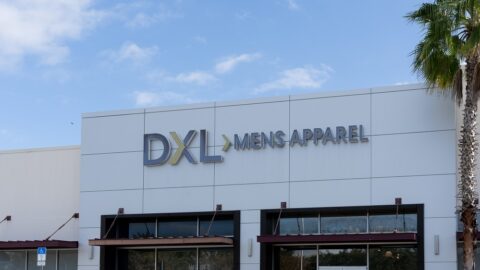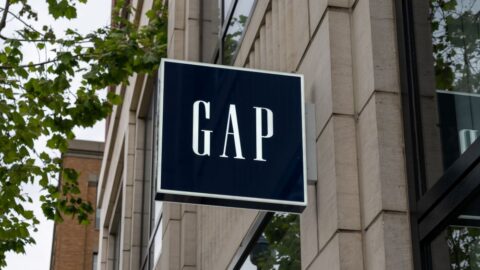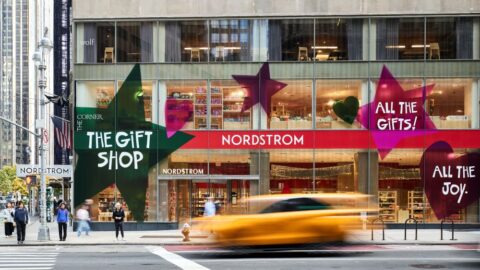An alarming sales slide in January for many retailers has retail analysts nervously speculating just how far consumer spending may drop in 2009. While the National Retail Federation (NRF) recently projected sales to decline 0.5% versus last year, other forecasters are projecting the sales decline could be even steeper.
TNS Retail Forward predicts the only growth in retail will be in the food and drug channels, while all other channels will see a 1.6% decrease in sales. TNS Retail Forward also warns that if pending government stimulus packages are not successful in stopping the bleeding of job losses and declining home values, the weakness in the economy will continue to vex the retail industry into 2010.
ShopperTrak’s National Retail Sales Estimate (NRSE) is forecasting a sharp 4.0% retail sales drop throughout Q1, driven in large part by a projected slump in foot traffic of 16.4%. Although the company has not yet released a prediction for the full year, ShopperTrak’s President Bill Martin points out that the early indicators aren’t positive. “All of our data, added to various economic indicators, suggest retailers will most likely struggle throughout Q1 and Q2. As retailers have already seen, Q1 will be especially difficult as shoppers experience post-holiday hangover and with the 2009 calendar moving Easter spending to Q2,” Martin said. “As of the week ending January 31, we have seen four consecutive weeks of a year-over-year decline in GAFO (general, apparel, furniture and office) retail sales.”
The four weeks of declining sales led to some staggering sales reports for many top retailers. Although Wal-Mart continued to defy the sales slump, many other cornerstones of the retail industry saw their same-store sales drop by double digits for the month. Some of the most alarming same-store declines included: Gap (down 23% same-and 34% for its Old Navy stores); J.C. Penney (down 16.4%); Talbots (down 24.6%); Nordstrom (down 11.4%), and Kohl’s (down 13.4%).
Another eye-opening sign of just how badly consumer spending has declined came from the January sales numbers from the top car manufacturers. General Motors said its U.S. light-vehicle sales for January plunged 49% while Ford Motor Co. said its sales fell 40%. Although the NRF and TNS Retail Forward forecasts do not include the automobile sector, the steep sales plunge could be another cause for concern for retailers as it spotlights the disappearing consumer confidence.
“For certain retail channels, particularly home goods, the situation is probably not much better than the auto industry,” said Frank Badillo, Senior Economist and Global Program Manager at TNS Retail Forward. “Sales of all durable goods tend to plummet during a recession. Among other things, what can make the situation worse for retailers is growing pressure to step up price-cutting and promotions. These will likely have limited benefit in bumping up demand while they do more to hurt sales and profit growth.”
TIMING THE TURNAROUND
As retailers struggle with their internal strategy to balance building demand while maintaining profits, the entire industry is keeping a watchful eye for when sales finally bottom out and then start to rebound. NRF forecasts a 2.2% decline in Q1; a 2.8% drop in Q2; a more modest 1.1% dip in Q3, before a 3.6% improvement in Q4.
“The first quarter will be key in terms of gauging whether the declines in retail sales begin to bottom out as we expect,” said Badillo. “At the same time, we should see job losses peak in the first quarter, so the second quarter will be pivotal in terms of whether job losses begin to plateau and maybe even let-up a bit. The third-quarter and beyond will be pivotal in terms of searching for signs of improvement in the economy. So I think each of the next several quarters will be pivotal in revealing the trajectory we can expect for the economy into 2010.”
NRF’ s Chief Economist Rosalind Wells, NRF’s agreed that momentum should build during the year. “We expect the economy to contract in the first half,” Wells said. “The light at the end of the economic tunnel, however, may be apparent in the second half of the year, assuming aggressive government policy.”
Since part of NRF’s optimism for the turnaround during the second half of 2009 is based on the government’s economic recovery package taking effect and having a positive effect spending, Wells noted in a recent The Wall Street Journal article that “the risk is that it could be lower,” if the stimulus isn’t passed or fails to drive spending.
While the economic stimulus currently under consideration includes a number of provisions designed to produce long-term economic growth and job creation, the legislation has so far failed to include the national sales tax holidays NRF has been pushing for to jumpstart spending. NRF in December proposed that a series of national sales tax holidays be held during March, July and October 2009, each lasting 10 days including two weekends. Tax-free treatment would apply to all tangible goods subject to state sales tax except tobacco and alcohol, ranging from retail merchandise and restaurant meals to automobiles.
NRF estimates that the proposed tax holidays could save consumers nearly $20 billion, or almost $175 for the average family, based on the $236 billion in sales tax collected nationwide each year. Beyond consumers saving money on already-expected purchases, retailers have reported sales increases of 35-40% from state-level tax holidays that have become popular in recent years.
In a February 5th letter to the Senate, NRF Senior Vice President Steve Pfister said, “Retailers considerable experience with sales tax holidays has shown that they provide a substantial inducement for people to shop,” Pfister added. “With consumer spending representing two-thirds of GDP, it is difficult if not impossible to foresee an improvement to overall economic growth until consumers regain confidence and resume spending.”
With or without the tax holidays, Jim Dion, founder & president of retail consultancy Dionco Inc., predicts retail sales will rebound once the job losses and housing prices normalize. “Fundamentally consumers really don’t change,” says Dion. “…Yes the spending stopped and right now it’s under tremendous pressure, absolutely, but that doesn’t mean the demand has gone away or it will go away. It is still there, and what it is really waiting for is some good news in some stimulus. Once the consumer sees any part of that happening, then I think it’s going to be a substantial change in their behavior.”












